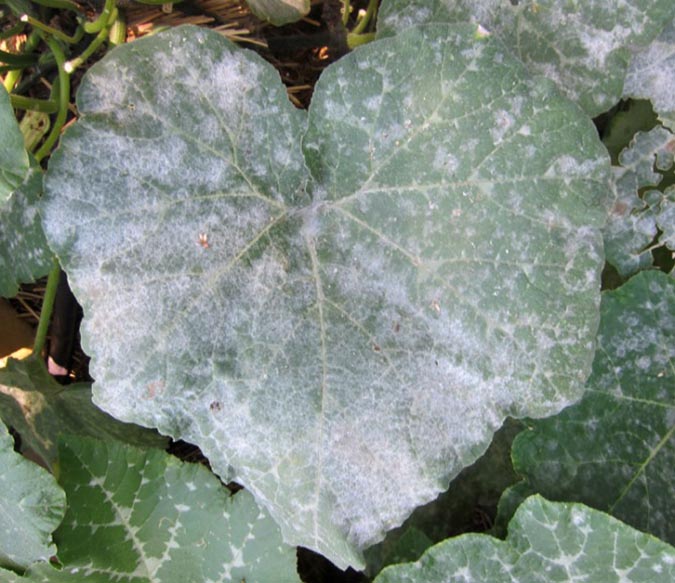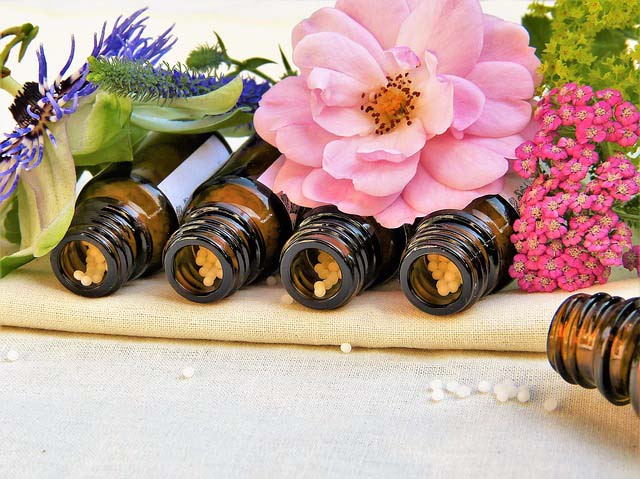Recently, Marjory was kind enough to feature me as a Local Changemaker on The Grow Network blog. When I completed the interview, I felt there was more to share. We especially did not discuss how homeopathic remedies extend beyond medicine for humans to include the treatment of our pets, livestock, and agriculture.
Read More: “Meet Elena Upton, Local Changemaker”
Homeopathic Remedies for Plants
Did you know that homeopathic remedies can help weak, pest-infested, and frost-damaged plants—and can even build them up?
Give Your Plants a Springtime Boost
You can strengthen plants in the early spring by giving them Silicea 200C (made from silica, a building block of all cells). Place 6–8 pellets in water to melt them, then use that liquid to water trees and shrubs by pouring it directly on their trunks and in the soil around them.
Treat Downy and Powdery Mildews

Since homeopathy is symptom-driven, different presentations of the same disease may require different homeopathic remedies. That is the case with both powdery mildew (which thrives in dry, warm weather) and downy mildew (which appears in damp conditions).
Use the following homeopathic remedies to treat powdery and downy mildew, but pay special attention to the symptoms of the disease and treat accordingly.
When the symptoms of each disease are as follows, the remedy of choice is Cuprum metallicum 30C:
- Powdery Mildew: White, moldy layer on the upper sides of leaves (can be wiped off)
- Downy Mildew: Gray-to-violet coating underneath the leaves after rainy weather
But the remedy of choice is Natrum sulphuricum 30C when the following symptoms are present:
- Powdery Mildew: Grayish-white mold on stalks and upper sides of leaves
- Downy Mildew: Gray or grayish-violet under the leaves after warm, humid weather
Treat Gray Mold on Strawberries
Another homeopathic remedy that benefits plants is the use of Calcaria phosphorica 6C and Ammonium carbonicum 30C to treat gray mold (Botrytis) on strawberries. This condition is due to deficiencies of calcium, phosphorus, and magnesium and to excess nitrogen in the plants. Using Calcaria phosphorica 6C and Ammonium carbonicum 30C resolves this deficiency and toxicity.
Also keep in mind that when Botrytis is present, you should not use artificial fertilizers or fresh or composted animal excrement. Just apply compost made from plants to ensure a less acidic environment.
Homeopathic Remedies for Animals

Image by Wim De graaf from Pixabay
Let’s move on to animals. As I mentioned above, homeopathic remedies are chosen based on symptoms. This is as true for animals as it is for plants and humans.
Following are some examples of symptoms commonly found in horses (although you could replace the word “horse” below with “goat,” “cat,” “cow,” etc.—the same remedy would be used for any animal exhibiting these specific symptoms):
- Do you have a horse with anxiety that is restless, fearful, or suffering from gastritis? Try the remedy Arsenicum album.
- Or has he gotten sick with a fever, developed bronchitis, become irritable (wants to be left alone), and started thirsting for large amounts of water? Try the remedy Bryonia.
- Or maybe she has digestive issues, along with apathy, indifference, sluggishness, and lack of reaction? Try the remedy Carbo vegetabilis.
I use a horse as an example with 3 different sets of issues to demonstrate how observation is key to choosing the correct remedy. Again, if you see these specific symptoms being exhibited in an animal of any other species, the same remedy would be used.
To offer another example, if a dog overindulged in his food (and everyone else’s he could steal when you weren’t looking) and later appeared bloated and irritable, I’d give him Nux vomica. If the horse out in the pasture overgrazed on grass and was bloated and irritable, Nux vomica would also be the remedy to relieve his discomfort.
How to Administer Homeopathic Remedies
Homeopathic remedies for animals can be dropped into their water.
Dosage is not an issue with homeopathy. It is not like milligrams of pharmaceuticals. Remedies consist of little sugar pills, and the medicine is sprayed on the pills during the manufacturing process. The sugar pills serve as the carrier for the medicine, so 4 pellets, 6 pellets, or 8 pellets are all okay. Use your best judgment based on the amount of water you are dropping them into. You can also dissolve a few pellets into a little water and use a syringe to dispense the liquid directly into the animal’s mouth.
In addition, you can purchase remedies as liquid tinctures. Although they aren’t readily available in the United States, you can purchase them online from other countries. My favorite source is Helios in the United Kingdom. Ordering from them is easy, and the tinctures usually arrive within a week. Here is the link: https://www.helios.co.uk/
3 Major Differences Between Homeopathic Remedies and Pharmaceuticals
So what are these remedies? Dr. Samuel Hahnemann (1755–1843), who developed the concept of homeopathy, recognized something that most doctors did not (and still don’t): There is an energy that drives all of nature. It is also referred to as a life force, vital force, vitality, or energetic signature.
Difference #1: Restoring Balance
The human body is subjected to a number of insults at every moment—changes in temperature, physical strains, and exposure to toxins or germs. In spite of all this, we rarely fall ill. And even if we do, we get well most of the time. We cannot escape the conclusion that there is a force within all of us that coordinates our system—a force that helps to keep the balance between us and our surroundings. Hahnemann recognized it as a function of life itself.
When we do get sick, it is because that life force, or vitality, has been disturbed. The disturbance of the vital force is the real dis-ease and that is what needs correction.
Homeopathy addresses these disturbances. Just as it takes a clear signal to tune into your favorite radio station, a clear energetic signal is the key to restoring balance to the organism, whether it be plant, animal, or human.
This is the first major difference between homeopathy and pharmaceutical medicines.
Difference #2: Like Cures Like
The second difference is the concept that “like cures like.” You see this in nature everywhere you look.
Let’s use stinging nettle as an example. It comes by its name quite honestly. Who hasn’t accidentally run into a patch and come out hollering, knowing you are about to come down with an itchy, burning rash? The homeopathic remedy Urtica urens is made from the stinging nettle plant that has been diluted and attenuated. When utilized for a rash, hives, prickly heat, or any other skin issues that exhibit similar symptoms, the results are nothing short of miraculous.
Difference #3: Dosage
The third difference between homeopathy and other forms of medicine is the tiny amount it takes to be effective. As mentioned previously, it rebalances disturbed energy patterns.
The body is a brilliant mechanism and only needs the correct information to right itself (as do plants and animals).
My point in moving from explaining the use of homeopathy for humans to discussing plants and animals is that we all have the same carbon structure, and therefore we are all healed in the same way. I have used these remedies on plants, animals, and humans for nearly 30 years—and I have yet to be disappointed.
What Do You Think?
What are your experiences with homeopathic remedies? What else would you like to know about homeopathy? Let us know in the comments below.
________________
The Grow Network is a participant in the Amazon Services LLC Associates Program, an affiliate program designed to provide a means for our team to earn fees for recommending our favorite products! We may earn a small commission, at no additional cost to you, should you purchase an item after clicking one of our links. Thanks for supporting TGN!

Elena Upton, PhD, is a classically trained homeopath, author, lecturer, and product development specialist with nearly 30 years of experience in the natural health field. Her practice extends to include many modern uses of homeopathy, as well as of German Biological Medicine and other holistic modalities. Upton continually searches for a better way, a simpler way, for healing ourselves, our animals, and our plants. Visit her at her website, ElenaUpton.com.









COMMENTS(3)
Thanks for that information! Homeopathy is an area that I feel weaker in, and I welcome any good, additional information. I’ll be looking for your book.
I have used homeopathy for over 30 years, was introduced to it early in life when I was struggling with chronic issues with PMS. What a life saver. I use it on my dogs, snakes, and self. Did not consider using it for my plants. Since I moved to the country, all my house plants died using the water here. I lost two snakes as well. My dogs were chronically ill, black stools. I used the sulfur remedy on my girls (dogs) and switched to filter water for all of us, plants and animals. I wish I would have caught it sooner, I would have saved my snakes as well. They were not old enough to handle the water switch. Never considered it a problem. Will try the silica remedy on my new plants. Thank you for this.
Is the natrum sulphuricum used the same way as the silicea? Thank you.